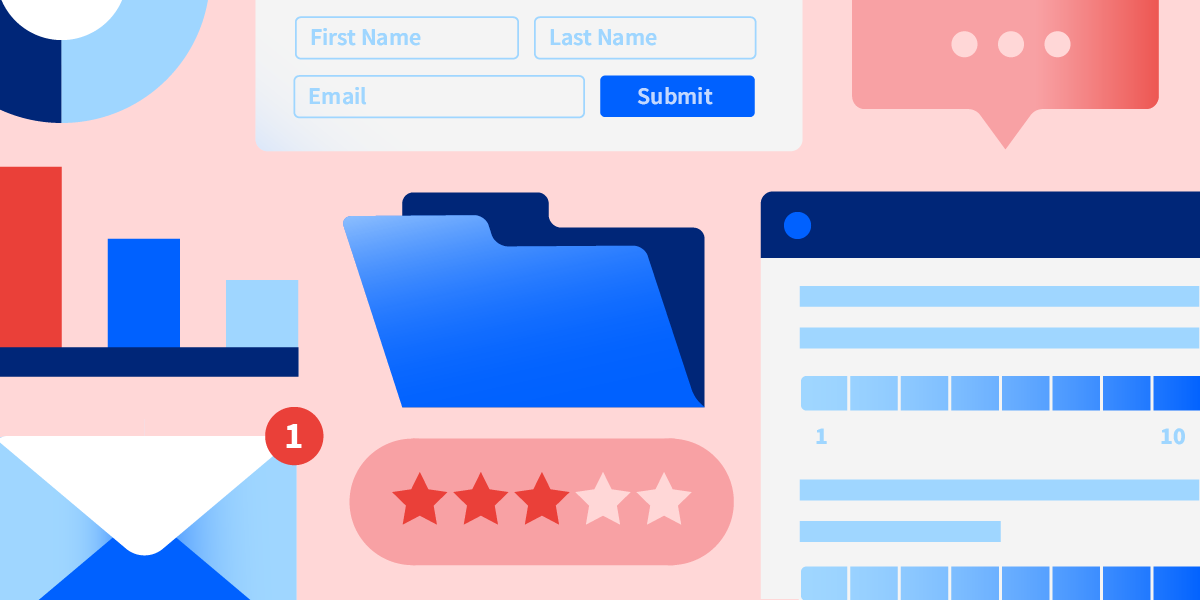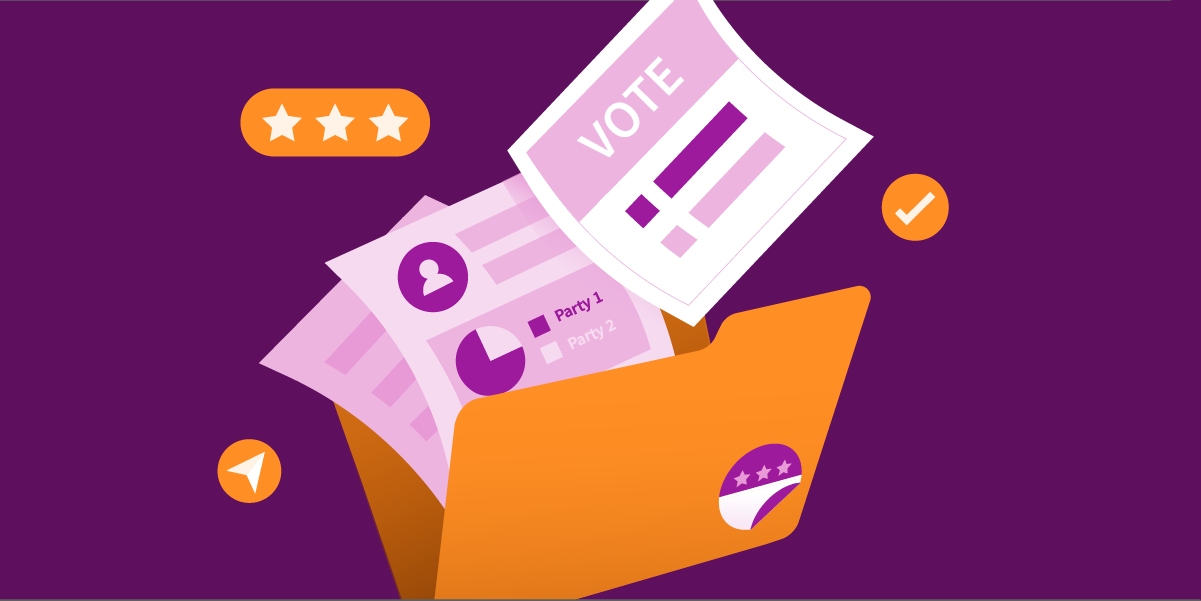Collecting and activating 1st-party data provides lots of valuable insights into your customer’s behaviour and preferences.
For programmatic marketers, this data can be leveraged to improve their targeting and segmentation to create personalized advertising messaging.
What Is First-Party Data in Marketing
First-party data is information collected directly from customers and prospects. It is gathered from engaged, consenting users who are familiar with your brand and offering.
By collecting this reliable and accurate data, you can trust that the data is reflective of the actual behaviour of your audiences, which allows for more personalized and engaging customer experiences–while maintaining compliance with privacy regulations.
Read on to learn how you can leverage 1st-party data to power your programmatic campaigns, including how and where you can store your data, the benefits of activating it, how to activate it, and how to maintain your data integrity.
Where To Store First-Party Data
To make the most of your 1st-party data, you’ll need to keep it stored and organized. It’s typically stored in your business systems, like a marketing automation platform, call center system, or in other sales, support, and marketing applications.
There are three platforms that marketers commonly use for 1st-party data storage: CRMs, CDPs, and DMPs. Let’s review each platform.
CRM vs. CDP vs DMP
You’ve probably seen these three acronyms referenced in the world of marketing. But what do they mean, and which is right for your organization? Let’s break it down.
Customer Relationship Management (CRM)
CRM platforms are typically used to store and manage customer-related data. Stored data might include contact information, purchase history, interactions, and preferences.
CRM platforms serve as a central repository for customer data. They also provide tools for organizing, analyzing, and leveraging the data for marketing purposes.
Customer Data Platform (CDP)
CDPs specialize in unifying and organizing customer data from various sources, including online and offline interactions.
A CDP creates a comprehensive customer profile that you can use for personalization, targeting, and marketing automation. It provides a single view of your customers and enables data activation across multiple platforms.
Data Management Platform (DMP)
A DMP can help consolidate and manage 1st-party data from various sources within your organization, allowing you to analyze and segment data for more effective targeting and personalization.
| Customer Relationship Management (CRM) | Customer Data Platform (CDP) | Data Management Platform (DMP) |
| Used to store and manage customer-related data. Can store contact information, purchase history, interactions, and preferences. Can provide tools for organizing, analyzing, and leveraging data. Examples of CRMs include Salesforce and HubSpot. | Unify and organize customer data from online and offline sources. Provides a single, comprehensive view of customers. Enables data activation across multiple platforms. Examples of CDPs include Segment and Tealium. | Consolidates and manages 1st-party data from various sources within your organization. Enables marketers to analyze and segment data. Examples of DMPs include Lotame, Adobe Audience Manager, and Oracle BlueKai. |
Benefits of First-Party Data for Programmatic Advertising
You know how to store your 1st-party data. Now what?
Let’s unpack some of the key benefits of leveraging this data to power your programmatic campaigns.
1. Enables Precise Targeting and Personalization
Activating 1st-party data is a key strategy for programmatic advertising because it enables precise targeting and personalization. By leveraging accurate insights from your own customer base, you can effectively reach specific segments based on their behaviours, preferences, and purchase history.
This level of precise targeting ensures that your marketing efforts are directed toward the right audience, and using relevant messaging. In turn, this increases the likelihood of driving conversions and engagement.
2. Enhances Customer Relationships
Activating 1st-party data can also enhance customers’ understanding of your brand and products, and help build trust. By gaining a deeper understanding of your customers through demographics, behaviours, and preferences, you can uncover valuable insights about their motivations, pain points, and purchasing triggers.
Use these insights to develop effective marketing strategies that resonate with your audience, and foster strong customer relationships.
3. First-Party Data is Privacy Compliant
With 1st-party data, you can be confident that the data you’re using is compliant with privacy regulations. This is because the data collected directly comes from your customers, who have given consent.
This transparent approach builds trust and strengthens your brand image, instilling confidence in your customers and reinforcing their loyalty in the long run.
Use Case: Leveraging Snowflake to Activate 1st-Party Data
To benefit from your 1st-party data, you’ll need to integrate your data platform with your programmatic platform. A partnership between both platforms makes it simple to leverage the data for your campaigns.
For example, StackAdapt, our programmatic advertising platform, and Snowflake, a data-cloud company, work together to activate 1st-party data. The integration between these two platforms allows marketers to leverage their customer data to power programmatic campaigns.
Joint customers can seamlessly integrate and transfer data into StackAdapt’s custom segment generation pipeline. From there, they can activate audiences across all biddable media channels and environments through StackAdapt, making the most of valuable audiences through retention and acquisition campaigns.
For example, this integration makes it possible to automate the usage of 1st-party data within Snowflake and access net new digital advertising inventory on channels like connected TV (CTV), in-game, and audio.
How to Maintain 1st-Party Data Integrity
First-party data is proprietary to your business. This type of data is considered to be the most reliable and accurate because it comes directly from the source and is voluntarily provided to you by users.
But, you can only reap the full benefits of this data if data integrity is top of mind. Data integrity ensures the usability, accuracy, and consistency of an organization’s data.
This integrity needs to be maintained from the moment data is acquired. Without it, your 1st-party data has very little value. In fact, it can end up being so inaccurate it has a negative impact on the performance of your programmatic campaigns.
CRMs, CDPs, and DMPs typically have features that will support data integrity. The main issues you should be aware of are human error, hardware and infrastructure failures, transfer errors, security issues, and cyber threats.
There are also key ways you can maintain your data integrity, aside from being aware of potential threats. To avoid human error, ensure your organization provides data entry training. This helps to build data literacy, and avoid human errors like data duplication.
It’s important to update and validate your 1st-party data frequently. Whether data updates are done in real time or within scheduled windows, they are essential for ensuring your data can accurately support decision making.
And, keep security top of mind! Frequent data backups, tests for vulnerabilities, and security measures like data encryption all play an important role in data integrity.
Start Leveraging First-Party Data
First-party data provides a competitive advantage by enabling you to optimize your programmatic strategies, improve customer experiences, and create more personalized campaigns.
By leveraging this high-quality, reliable, and accurate data, you can deliver marketing messaging that helps you achieve your campaign goals.
Looking to leverage 1st-party data to power your programmatic campaigns? Request a demo to learn more about StackAdapt.





